Don’t Do Knee Push-Ups — Try These Modifications Instead
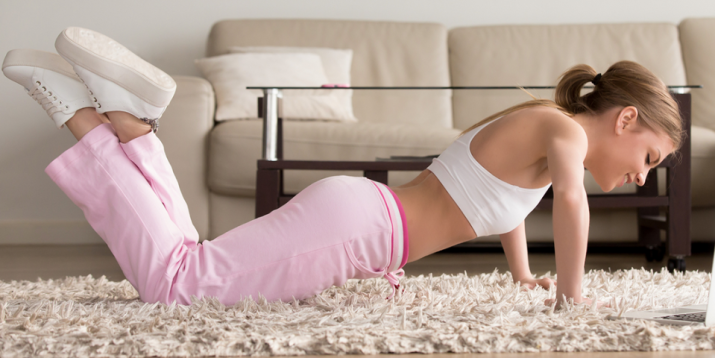
We should all be doing push-ups. They’re effective, functional, and may even be an indicator of heart health. But if you struggle with the full expression of the exercise, you might look to modified push-ups, like the knee push-up.
Modified push-ups are a suitable substitution for any workout that includes standard push-ups. BODi Trainer Kelsey Heenan recommends trying to start with a few regular push-ups before changing it up.
“Let’s say you’re doing one push-up where you’re getting down all the way, and you’re getting back up,” she says. “That’s amazing. Do that one, and then go into a modified version like putting your hands at an incline.”
But when it comes to modified push-ups, some are better than others.
The Problem With Knee Push-Ups
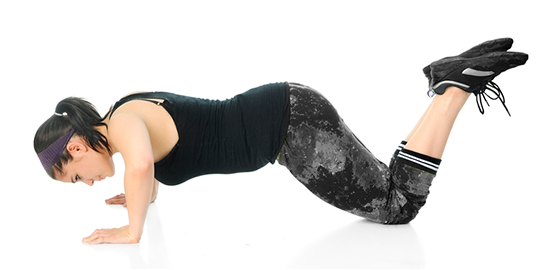
Though it can be used as a modification, especially if you’re limited by space and equipment, “the knee push-up actually isn’t a great way to build up to a traditional push-up,” explains Trevor Thieme, C.S.C.S.
Let’s look at how to perform a knee push-up and see where it falls short as a modified push-up:
- Start in a high plank position but with your knees on the floor instead of your feet.
- Keeping your elbows tucked and core and glutes engaged, lower your torso until your chest is within a few inches of the floor.
- Pause, and then push yourself back up to the starting position.
By keeping your knees on the floor, you’re eliminating the work required of your core and legs and deemphasizing the shoulder-elbow-wrist alignment. Therefore, “it doesn’t teach or reinforce the right mechanics,” Thieme says.
So until you can perform traditional push-ups with ease, try these three modified push-ups instead.
3 Optimal Push-Up Modifications
1. Incline push-up
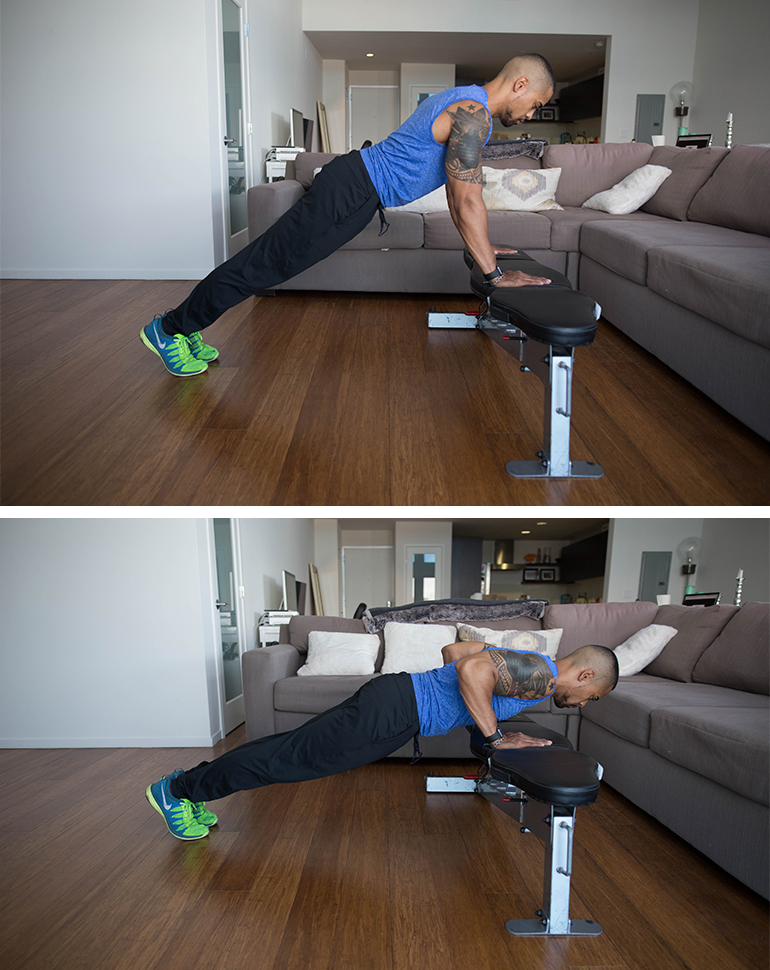
- Place your hands slightly wider than shoulder-width apart on a bench or other stable, elevated surface, and assume a high plank position with your arms extended and your body straight from head to heels.
- Keeping your back flat and core engaged, lower your chest to within a few inches of the elevated surface.
- Pause, and then push yourself back up to the starting position.
2. Reduced-range-of-motion push-up
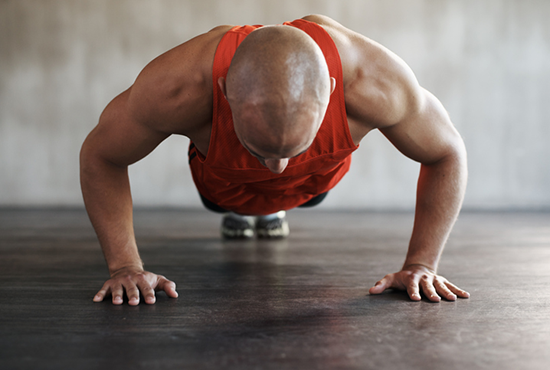
- Start in a high plank position with your hands on the floor.
- Keeping your elbows tucked in toward your body and your neck in a neutral position, lower your torso as far as possible. Aim for at least 75% of your full range of motion so that your chest remains a bit higher at the bottom of the move than it would be during a classic push-up.
- Pause, and then push yourself back up to the starting position.
“If you can go three-quarters of the way down, try to pause at the bottom of your movement,” Heenan says. “That gives your muscles a little more time under tension, so you’re developing more strength.”
3. Negative push-up
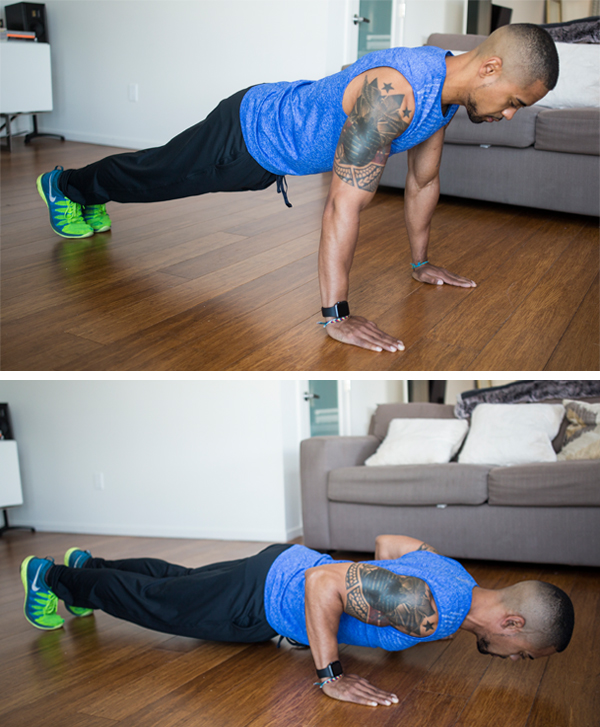
- Start in a high plank position with your hands on the floor.
- Keeping your elbows tucked and core and glutes engaged, slowly lower yourself to the floor for five to 10 seconds.
- Return to the starting position and repeat for reps.
Benefits of Modified Push-Ups
Reducing your range of motion or doing push-ups on an incline has an unfair reputation of “cheating” or “copping out.” But here’s why modified push-ups are useful.
1. They’re approachable
One of the most important benefits of modified push-ups is their accessibility. The standard push-up is challenging — especially for people who are new to strength training.
Making these adjustments allows beginners to learn proper form and practice the full range of motion while gradually building up enough strength to perform the standard push-up.
2. They offer similar benefits as normal push-ups
Push-up modifications also offer many of the same benefits as the standard push-up, including the ability to strengthen the chest and arms while challenging the muscles of the core, making them an at-home workout staple that can be performed anywhere — no equipment required.
